Frequently Asked Questions
Here at ASL Limited, we are frequently asked questions about drainage so we would like to share the answers with you – if you have further questions or would like deeper clarification please do message us on the 'Have drainage questions?' form on this page OR give our Gerry a call on 0800 181 684. Maybe we can add it to this page for everyone to benefit from.
Yes, it's a fixed price. The minimum call-out would cover up to an hour. The price includes the use of rodding and light jetting to clear the blockage. Usually, if it's not cleared within the hour, that indicates there is something more problematic causing the blockage and it's not a simple blocked drain. That in turn would need further investigation but would be quoted for you to choose whether we go ahead or not. Take a look at the website to see more about how we can help you if you like:https://www.asllimited.co.uk/blocked-drain-clearance
Yes, they might – if the drain is shared or beyond your property boundary. It is best to check with the company you pay your water rates to (this can usually be found on your water bill). If they do not take responsibility for that section of the drainpipe, you could then either be; charged high fees to get it solved or left to source blocked drain clearance yourself. We explain about the responsibility of drainage in our blog: https://www.asllimited.co.uk/drainage-blog/blocked-drains-responsibility-where-does-it-fall
You can find out more take a look at our blocked drain clearance page on our website. https://www.asllimited.co.uk/blocked-drain-clearance
I would like to talk about our underground pipes that transport wastewater (sewage water or sewage) and rainwater away from houses and buildings. The main purpose is to protect the building, especially the foundations.
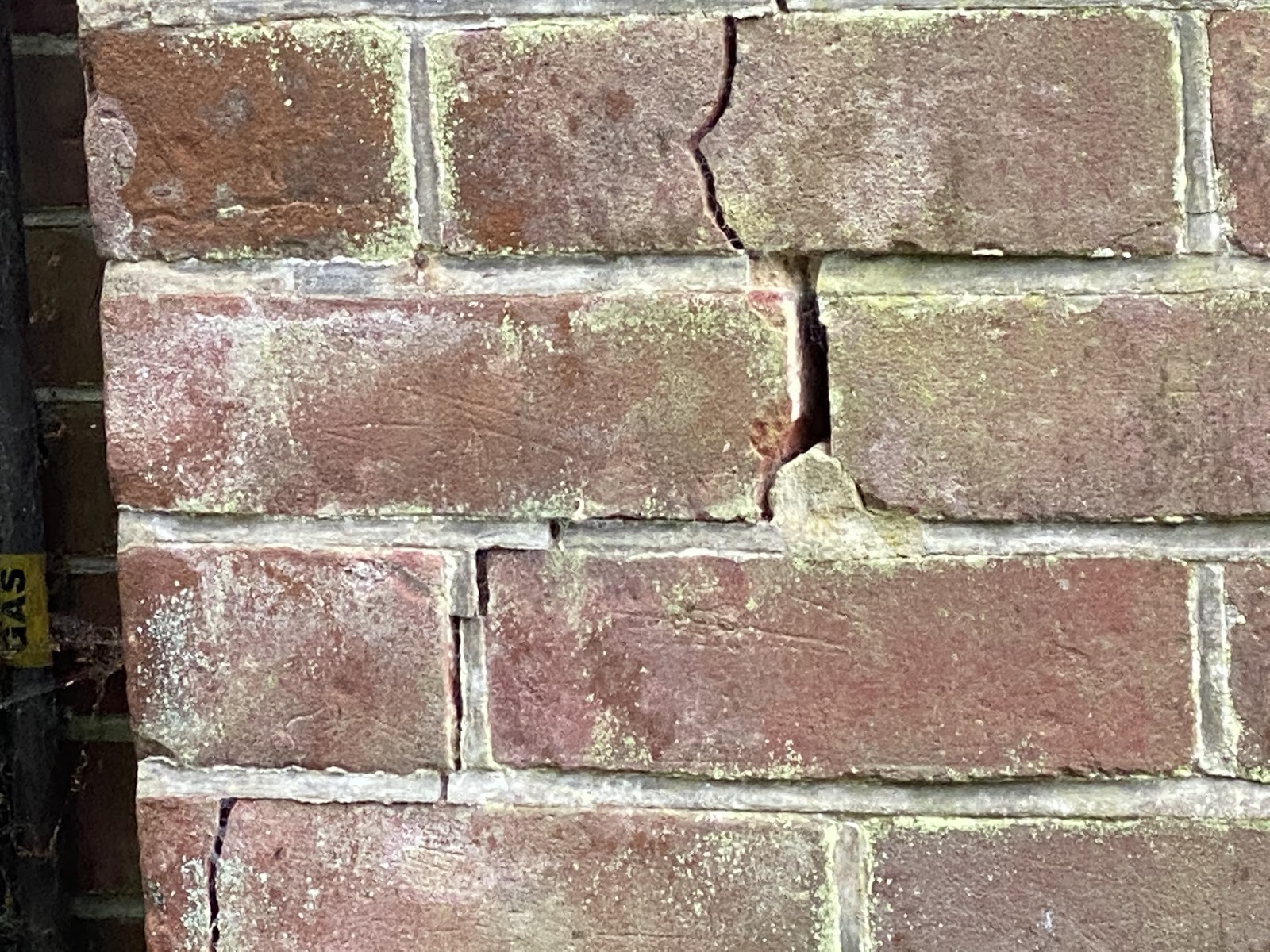
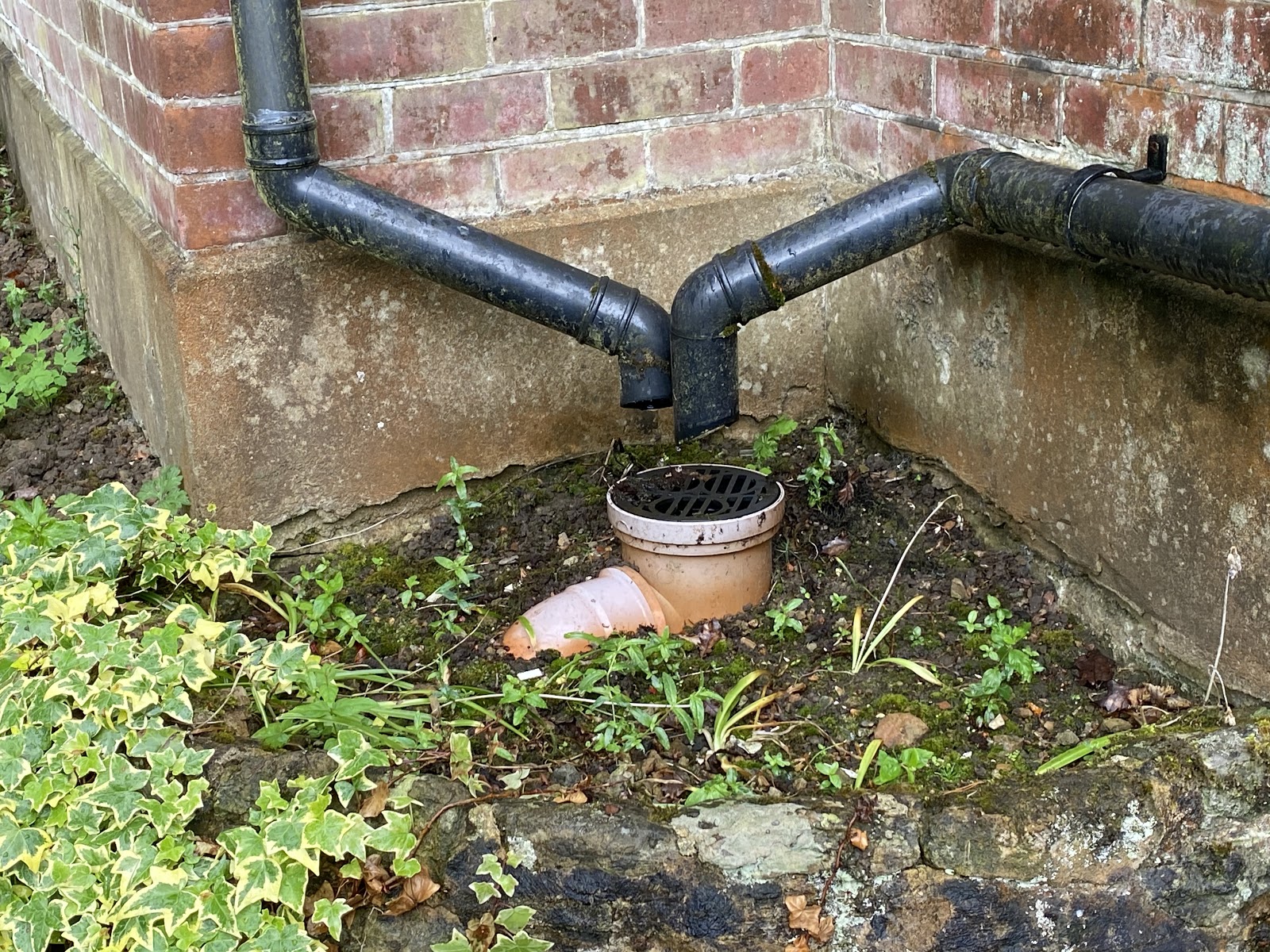
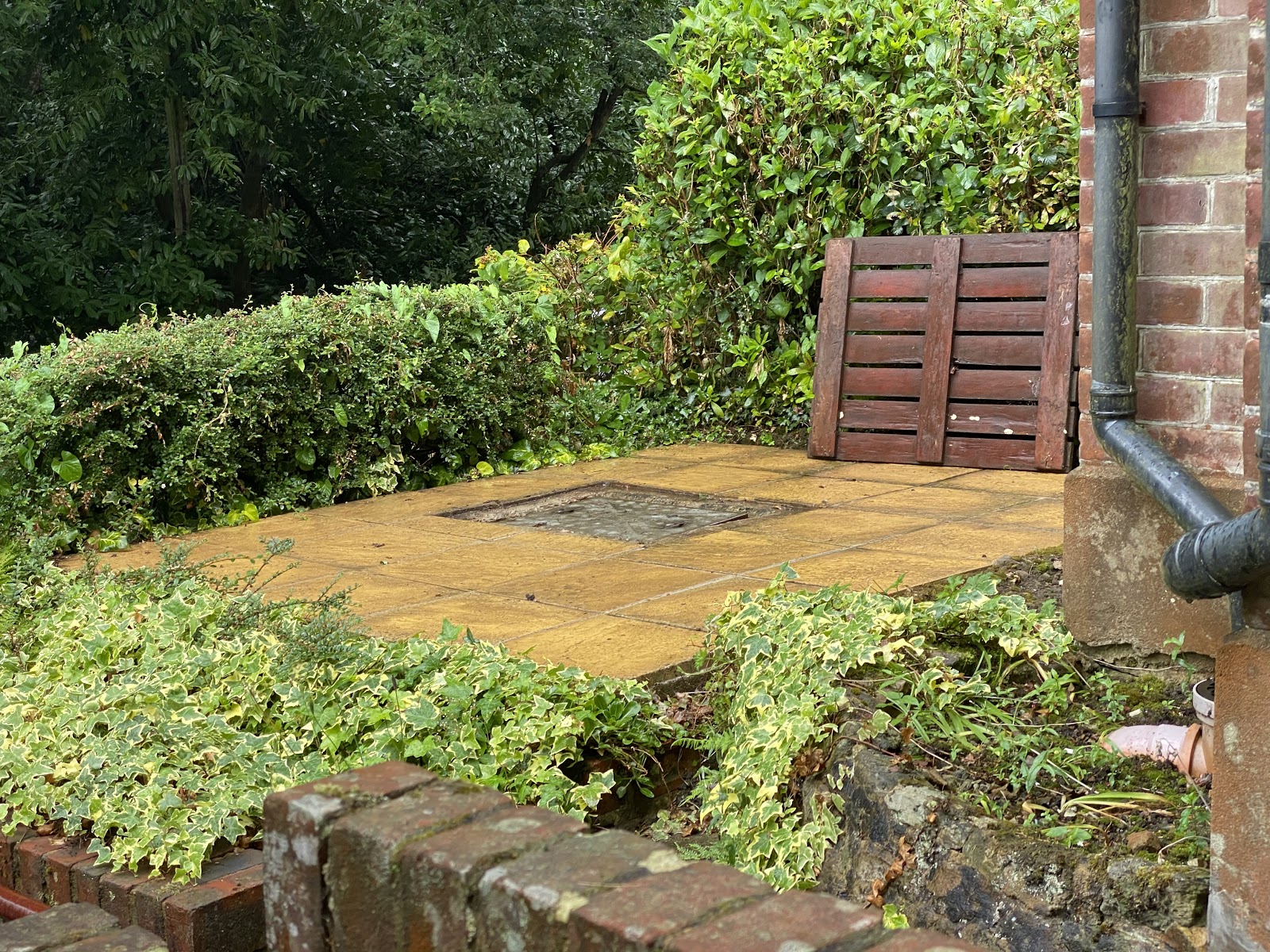
Most properties have separate drains for surface water and wastewater. Understanding the drains around your house and how they lead to the public sewer or your private system gives you the upper hand when it comes to dealing with potential problems. If the connections are not separate it can lead to an overflow of the public sewage treatment works, or private treatment plants and septic tanks during heavy rainfall – potentially resulting in a foul overflow outside your home, affecting your environment, rivers or streams.
If you are unsure of the setup you have at your property it would be prudent to hire an expert to help you find out. In the event of you experiencing a blockage or overflow you can call ASL on 0800 181 684 and our experts will be happy to assist and answer any questions you have.
Surface Water:
Surface water drainage includes rainwater and runoff from driveways, roofs, gutters and pond overflows. This water can be safely returned to watercourses untreated.
Foul Water:
In comparison, foul water is any wastewater from bathrooms, toilets, kitchens and washing machines. Untreated sewage water must never be discharged into a watercourse because there is an unacceptable risk you may pollute nearby rivers and even drinking water so it’s crucial to avoid this.
Public treatment works
If your property is attached to the main sewer line via freefall or a pumping station, all foul water from your property is likely to be transported to a public sewage treatment works, especially if you live in a built-up area.
Private systems
If your property has a private sewer system, discharging treated water into a watercourse, you are bound by general binding rules for existing and new treatment systems from the Environment Agency. According to the Government*: any private sewage system discharging treated water into a watercourse should abide by the binding rules; If your system was installed and discharging before 31 December 2014 you have an ‘existing discharge’; If your system was installed and discharging on or after 1 January 2015 you have a ‘new discharge’.
*The requirements changed on 1 January 2015.
If your discharge causes pollution you may be committing an offence. The Environment Agency, or ASL – our company – will give you advice to help you fix the problem. If your discharge continues to cause pollution the Environment Agency may take enforcement action against you.
You must make sure you use the correct treatment system for your property: Use a small sewage treatment plant to treat the sewage from your residential home if you are discharging to a watercourse such as a river or a stream.
A sewage treatment plant (also known as a package treatment plant) treats sewage to a higher standard than a septic tank.
You should get advice from a competent service engineer (like our Gerry) if you need help understanding: Discharges from septic tanks can go into a drainage field with the right type of soil, but cannot go directly to watercourses. This is not allowed under the general binding rules.
To ensure your foul drains containing the sewage from the WC, kitchen sink, et cetera flows into the right drain or sewer, you need an expert to carry out a drain survey. Call our team on 0800 181 684 to arrange for our experienced engineer to do this.
Sewage from your property drains into the public sewer system. It is important you ensure it is draining effectively. There are numerous ways to assist this, including:
- Using purposely designed toilet paper.
- Not pouring fat down the drain.
- Keeping your drains in good order.
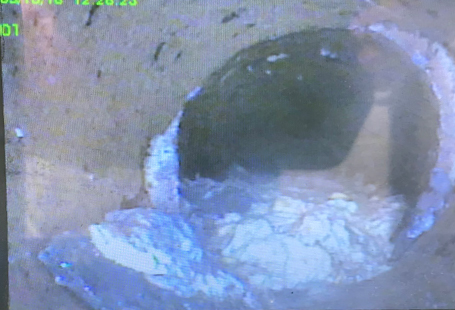
This is an image from our HD camera during a drain survey
Avoid causing blockages: Thames Water clear around 80,000 blockages every year. Here at ASL we clear 10 to 20 drains per day.
Blockages can lead to flooding, sewage overflow, and the pollution around properties and even natural watercourses. Thousands of drains around the UK become blocked because of misuse. So, it is important you take responsibility for your drainage system and do everything you can to prevent any cause of blockage.
Download Thames Water’s ‘Keeping drains clear’ booklet.
If you own a restaurant, takeaway, hotel or pub you can take responsibility for your waste now. Find out more by downloading Thames Water’s ‘Managing your waste booklet’ AND giving us a call on 0800 181 684 to help you avoid adding to the problem!
Surface water drainage ensures that any rainwater which runs off your property’s roof or paved areas is drained away, to prevent flooding. Surface water is collected in gutters and gullies to flow into the public surface water system, ending up in rivers and streams. If you have a private system then your surface water should end up in a soakaway on your land.
How do you know if your property has surface water drainage and how can you tell whether your property’s downpipes drain into a public sewer or a private soakaway? These are a couple of the most common questions our customers ask.
Learning about your property’s drainage system is important and can be extremely helpful. The answers to the above questions are very apparent when we look in the right place at the right time, demonstrated in the photo above.
Unfortunately, it is often unnoticed because no one wants to go outside when it is pouring with rain! It can be obvious if you pop outside in your raincoat and look around your property. Look for rainwater cascading off your gutters at any point or look to the bottom of your downpipes. Are they pouring out onto the ground next to the foundations? This indicates (as in the picture above) that the water is not going where it needs to, however, it is probably a simple fix.
An example of why you should have the correct surface water drainage.
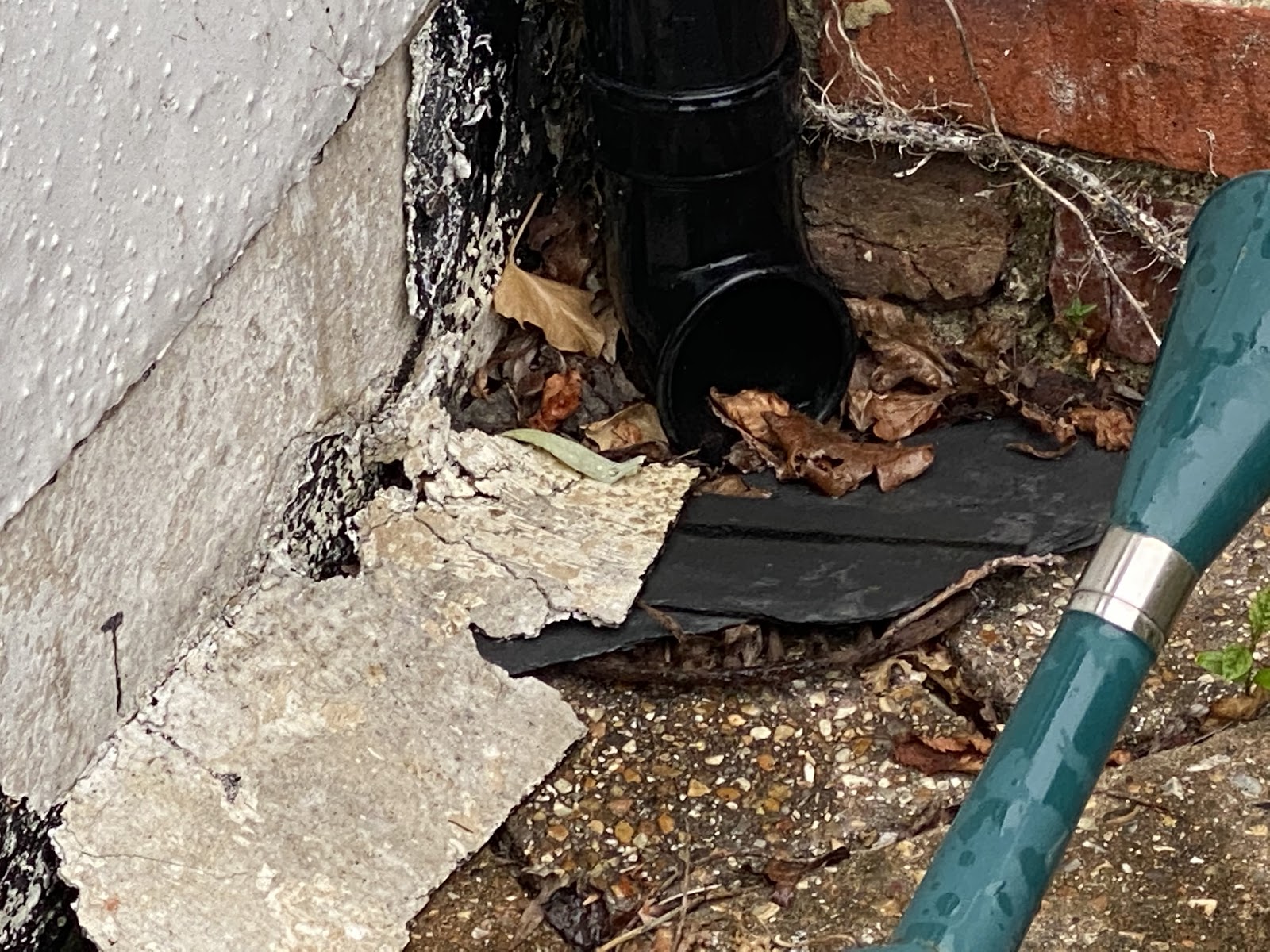
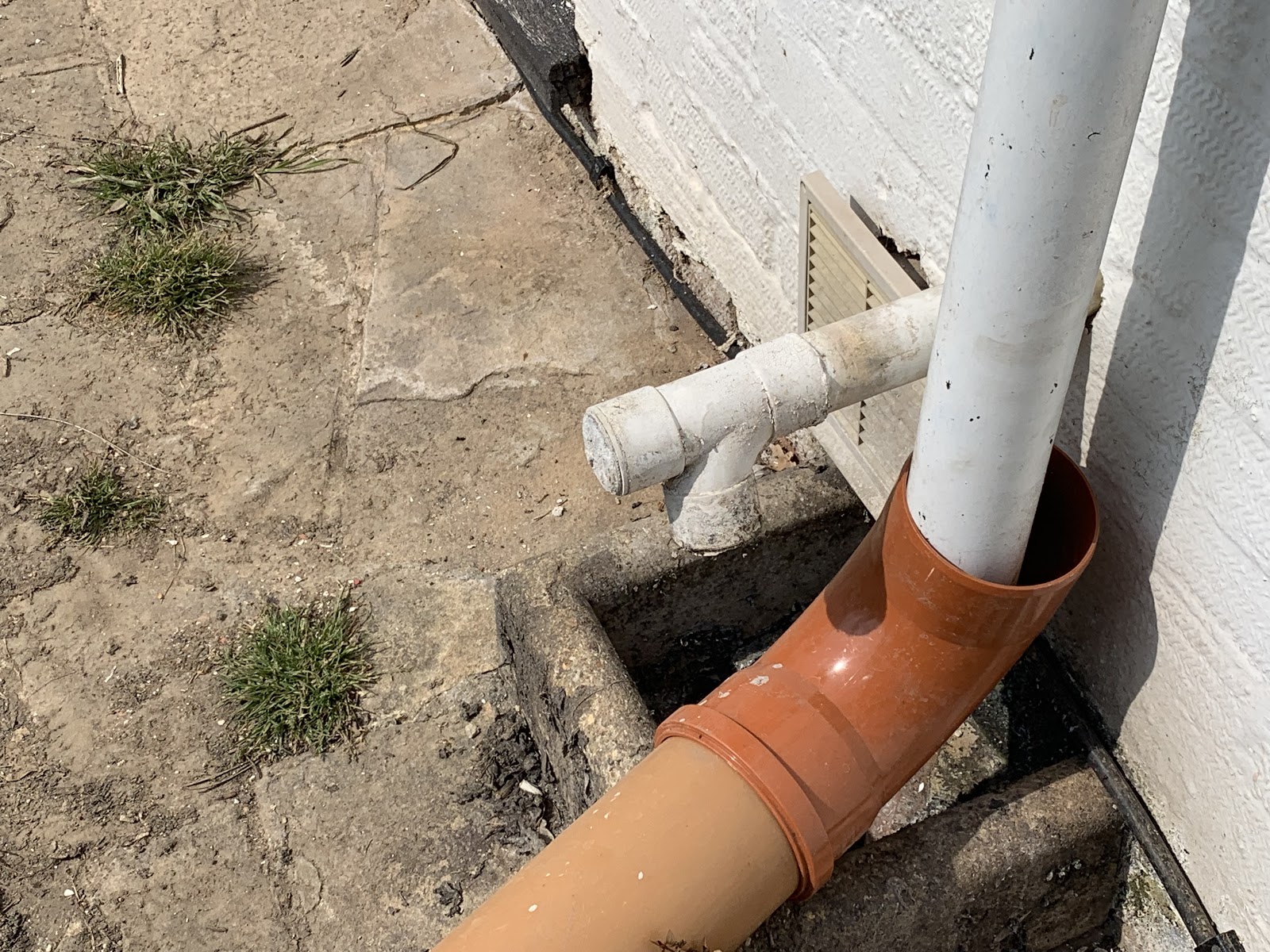
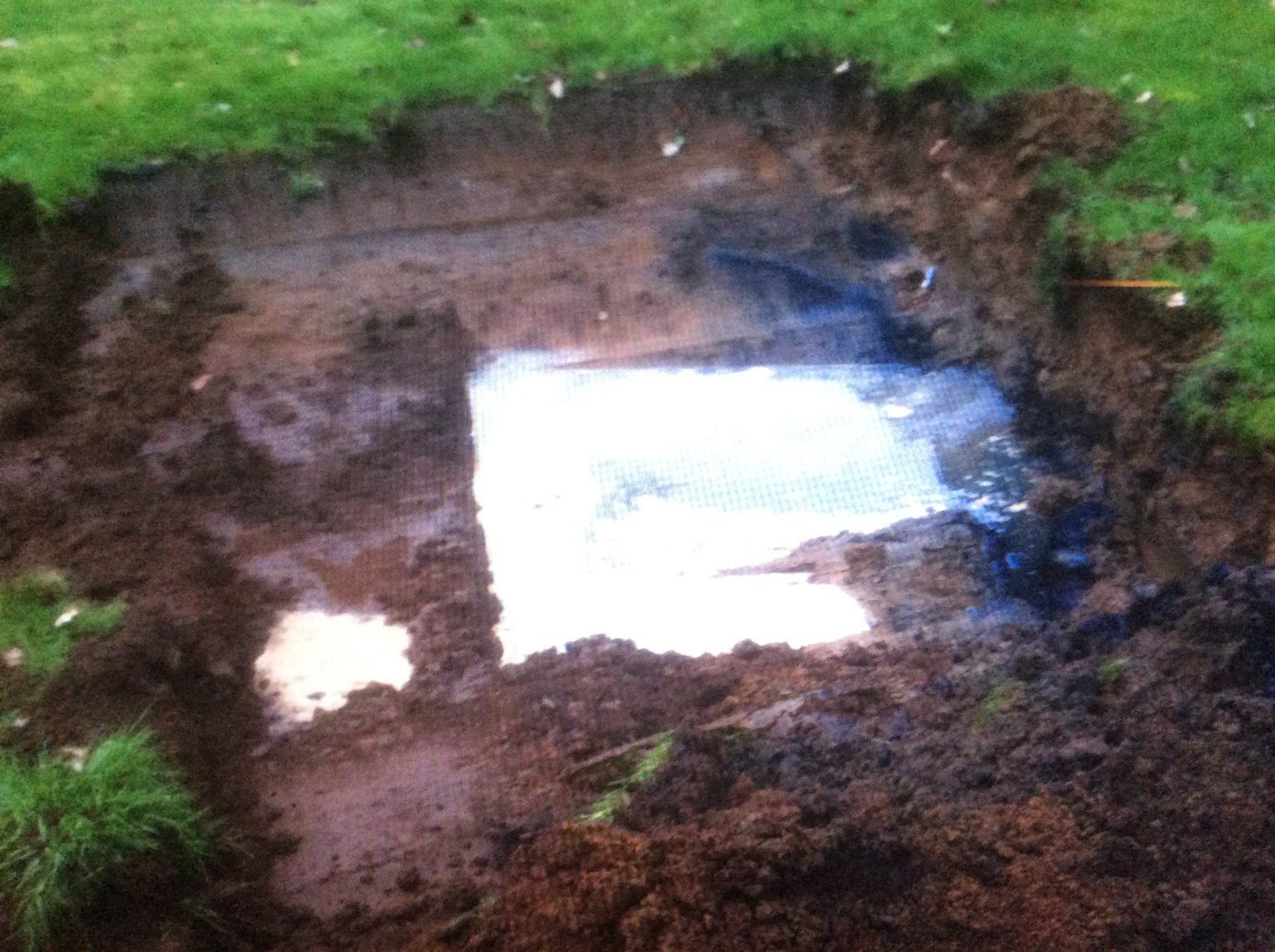
The right-hand picture is the result of rainwater in the private sewage system, the septic tank or treatment plant causing damage to the ground
One of our customers realised the damage caused by rainwater into her permitted sewage system (her private system) which discharges into a soakaway. The amount of surface water was too much for her system to cope with in addition to the sewage it is meant for.
To solve this problem the lady agreed to put a temporary pipe above ground discharging onto ground away from the foundations of her house, a temporary measure to save the treatment plant and the foundations until a soakaway for rainwater could be installed.
Two days later we dug a 20-meter trench from the downpipe serving the roof, supplied and laid pipework up into the new soakaway purposely designed for roof/surface water.
One other possible way is checking your property’s title deeds to get information about property and land. It might be possible to do this through the Gov.uk website, or looking at your original planning application.
You can always investigate your property’s surface water drainage systems for yourself. Spend the time exploring the exterior of your property for any signs of a soakaway. One way to do this is to follow the rainwater downpipes from the side of your house and see how far they go. You may be able to see a faint dip in the ground leading from your house to a slightly sunken area on your lawn. This could point to the location of a soakaway. However, you must be eagle-eyed, as generally soakaways are installed as discreetly as possible. So, they can be difficult to spot!
If this does not work you can always call our Ken, Michael or Claire on 0800 181 684 to help you locate all your drainage pipes. They will arrange the right person and the right equipment for your drain mapping survey. Our camera with a probe attached will track exactly where the camera goes, therefore where your drain is and the depth of it.
A soakaway for surface water or roof water is an underground pit in your garden (generally in the lawn) that is filled with gravel, or plastic crates. Normally situated about 5 to 7 metres away from the property’s foundations, a soakaway is where runoff from your surface water drains will go. The water will slowly drain through the gravel and back into the ground – providing the right calculations have been made – nourishing your garden without flooding it with large amounts of water at a time.
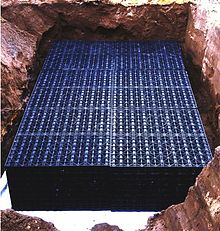
Soakaways are very discreet and installed in a way that you wouldn’t necessarily know they were under your garden (unless you knew what to look for, that is).
Surface water or roof water entering the foul system indirectly or directly is not good. The average house discharges less than a cubic metre of sewage and water per day (download full guidance notes on discharge from the Environment Agency) but if roof water or surface water – during a medium downfall of rain – is able to enter the foul drainage system through unsealed manhole covers or leaking surface water purposely, it can cause 3 to 10 times your allotted amount of sewage and water. When this amount of surface or roof water discharges into foul public sewers and eventually to the public sewage works, the public works find it difficult and aren’t able to cope.
In some cases the same effect will occur to private systems, treatment plants and septic tanks. When this happens, it can push untreated water and raw sewage through the system into the watercourse, polluting rivers and ponds or drainage fields, clogging them up and contaminating land.
Any private sewer system is bound by general binding rules and if your system is polluting then it is not inline with those rules and ASL Limited can help you put it right.
Septic tanks can discharge into light aerated soil in certain areas. New installations are being phased out in areas with seasonal damp ground that are not suitable and are prohibited.
Sewage and untreated water should only be discharged into a public or private foul drain with a treatment system meeting the conditions of the binding rules or privately transported from a sealed cesspit, sometimes called a cesspool pumped or free-flowing to a public sewage works.
Untreated sewage water must never be discharged into a watercourse. If you do allow foul water to drain into your surface water drainage system there is an unacceptable risk that you may pollute nearby rivers and even drinking water – so it is crucial to avoid this.
One of the most important points you need to remember is that you must comply with the new septic tank regulations (unless the septic tank in question was installed before 1983). In any event it must not pollute or be polluting otherwise, you could face a significant fine!
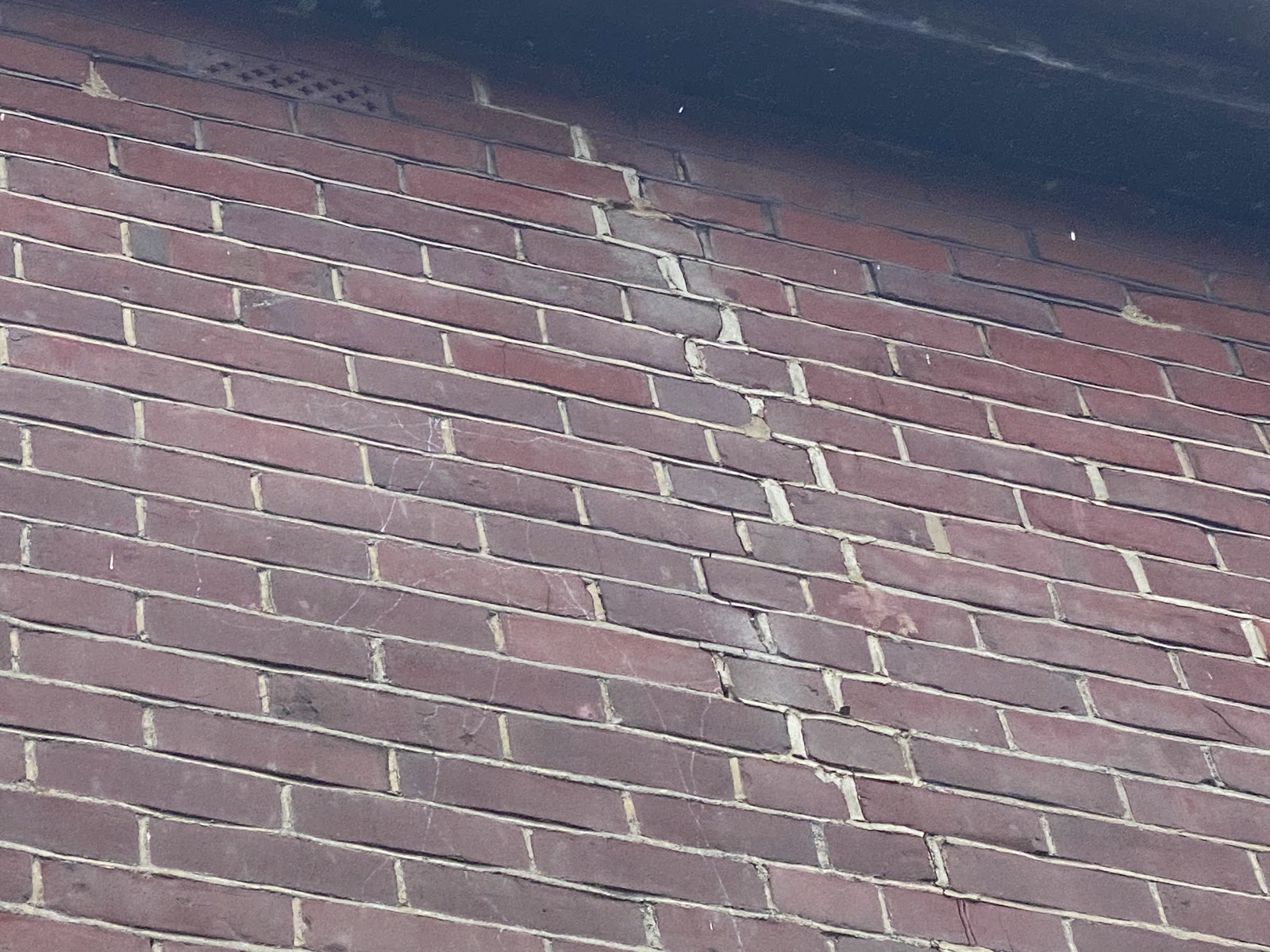
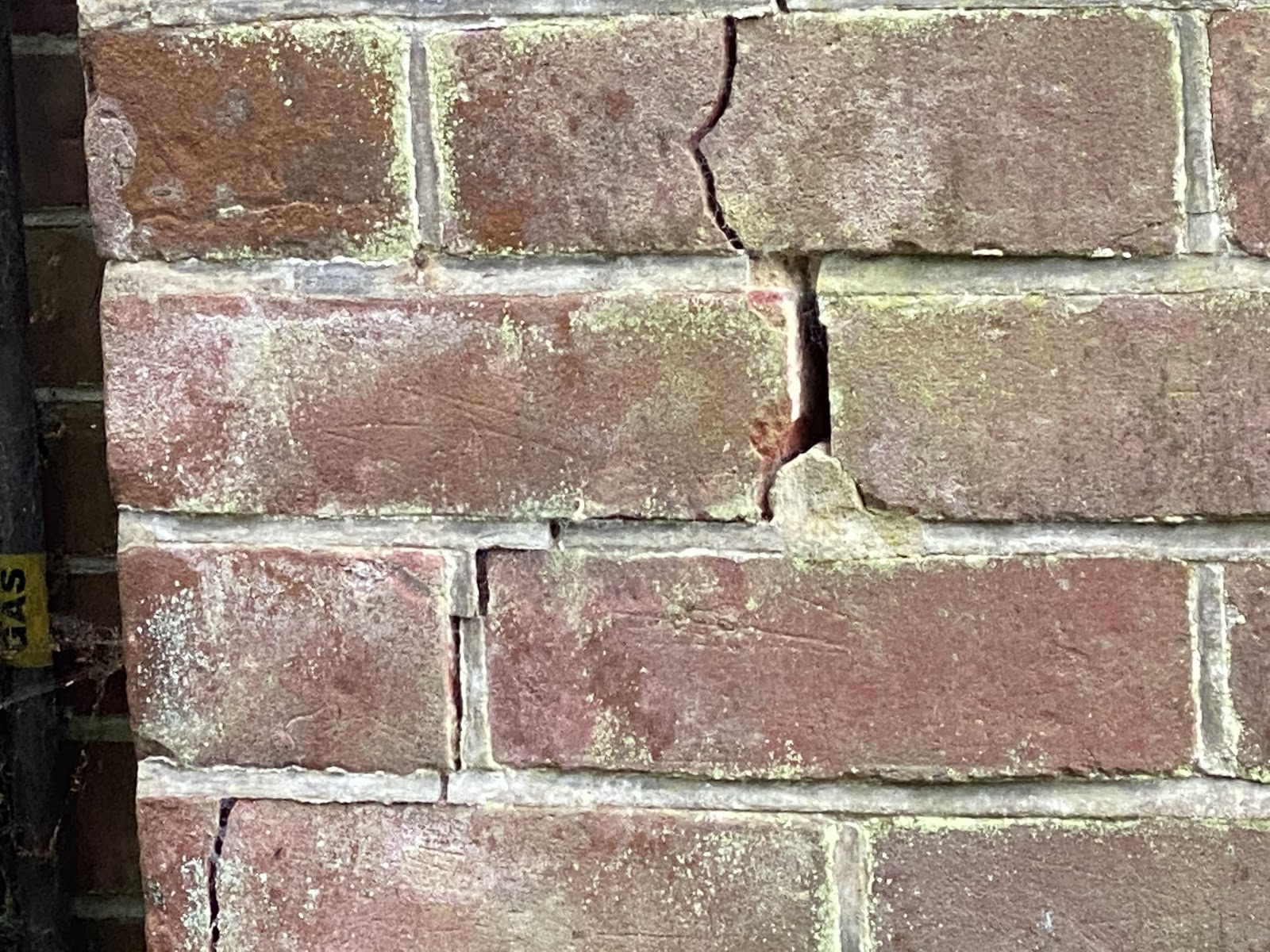
The risks to your property of having no surface water drainage are substantial. Living in the UK, you’ll be aware of just how much rainfall we have every year.
If you do not have the appropriate surface water drainage solutions in place, you could experience flooding, waterlogging, undermining of the foundations and damage to your property during periods of rainfall.
Therefore, it is extremely important you have an appropriate surface water drainage system in place to reduce the likelihood of these problems.
If you’re new to your property, you’re looking to buy somewhere, or you simply don’t know what you’re looking for, pay a professional to find out what drainage system your property has. If it is a private system then you need to know if it is the appropriate set up for that property and the land it is on; it will be prudent for you to talk to our Gerry who will explain in layman‘s language what you have and how it works, what to look out for, possibly saving you £10,000-£20,000 maybe more.
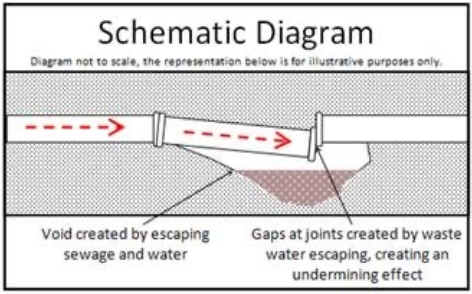
At ASL Limited, our drainage experts can carry out a CCTV + drain mapping survey to find out whether your rain and surface water is draining into a soakaway or straight into the sewer system. Having a CCTV drain mapping survey carried out is one of the best ways to understand your property’s drainage system.
At ASL, we will survey your drains and provide you with a schematic diagram or a sketch. This shows you where your drains run and where all discharge points are, so that you know how everything works.
If you are buying a house it would be a good idea to ring our office and enquire about a ‘House Purchase/Selling Survey’.
If you already know the house you are buying has a septic tank we suggest that you find out more about how to maintain it.
In our blogs we, at ASL, talk a lot about preventing blocked drains and that’s because preventing blockages keeps your drainage system working properly. It is essential you avoid washing food items, fats, oils, and grease down the drain.
Regular drain maintenance, at the end of a two year period carried out by professionals, is essential for the smooth running of your drainage system. At ASL Limited, we provide drain cleaning services carried out by our drain engineers. Drain cleaning helps keep your drains running smoothly and prevents debris from building up in your drains and blockages forming over time.
Help Surface Water Drain into Soakaways Effectively
If the surface water from your property drains into a soakaway, you need to ensure it does so effectively. One of the problems of having a soakaway installed too close to the surface; you may get a healthy patch of grass in one area only, which stands out like a sore thumb.
You may find the tips below obvious but possibly helpful to keeping your soakaway properly maintained:
- Keep rainwater drains clear of debris, especially free of sewage water (foul effluent).
- Avoid your foul drain being inadvertently connected to your surface water system by informing any handyman or builder that you have a private system.
- I kid you not; it is advised that you make up a sign or stickers to inform ‘here is a private system’ and ‘not to put sewage water into surface water or vice versa’. There is a big expertise gap between our fully trained civil engineers and a local builder, our blocked drains engineers are informed and trained to direct you to the right expert for that particular problem with your drainage systems or drains
It is my understanding that the Environmental Agency holds the householder (the operator) responsible, you as the operator would be wise to put up a sign to that effect. If a handyman or the local builder installs a pipe from the kitchen waste into the surface water system it can have a devastating effect to the environment, rivers and streams and of course to your soakaway in the ground:
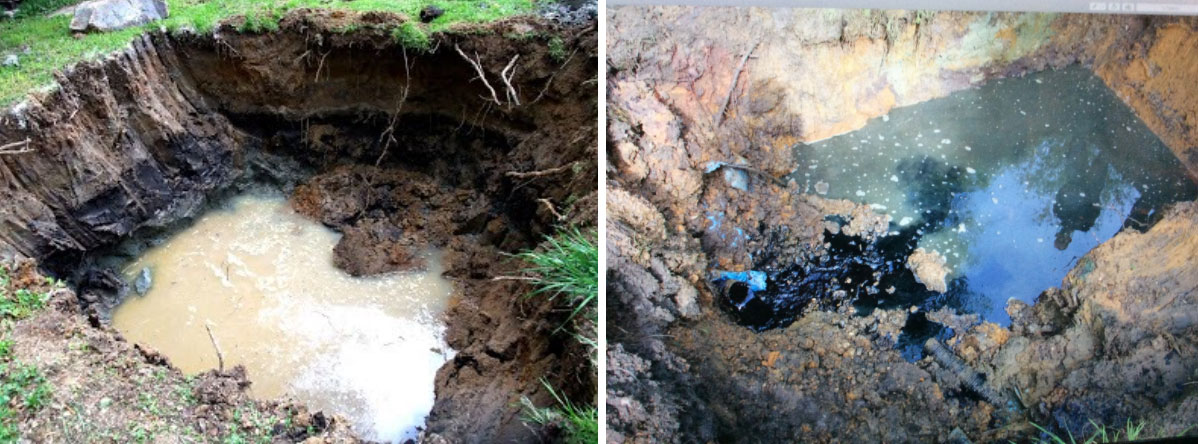
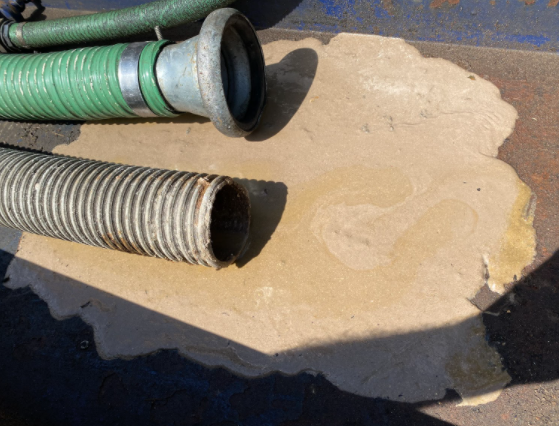
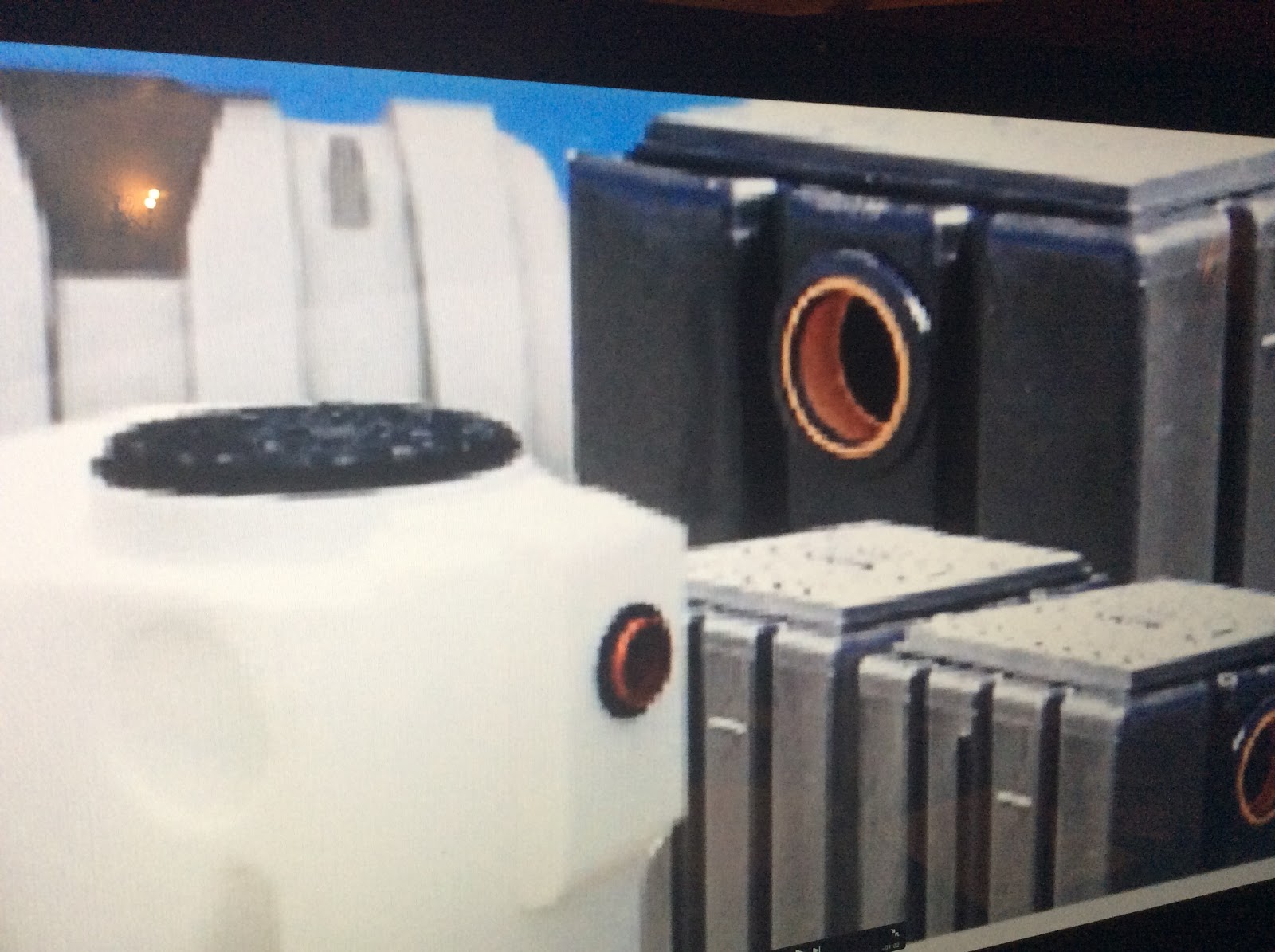
It goes without saying that the exterior of your home can collect a lot of debris. From leaves and garden soil, to loose rubbish, rainwater drain pipes can become full of garden debris.
Thankfully, there is a way to manage this problem. Every month you should clear out your rainwater pipes to keep them free from leaves, dirt, and other debris. It is particularly important to clear out your rainwater pipes after stormy weather to clear excess debris build-up. ASL can carry out regular maintenance to the drains around your house for you.
Yes we can. If you have an existing soakaway that is no longer working properly or is unable to cope with the amount of water, as a result of being installed in the wrong type of ground, we can install a new soakaway at a deeper depth or a different type of solution i.e. boreholes, pumped to higher suitable ground to supply and install land drains or a drainage field.
We work to install your soakaway to receive surface water or roof water to land drains discreetly in your garden, making sure the soakaway pit and all land drains are filled with clean flint stone and covered with a plastic membrane. Absorbency tests are then carried out to ensure it is the correct size to help absorb all rainwater and roof water effectively – draining it back into the soil or the ground.
Soil absorbency tests

Before we start any work on your property, we will carry out soil absorbency tests in the ground to ensure suitability for a rainwater soakaway. If a soakaway is not the best solution for your property, because the soil is not absorbent enough, we will advise you on a suitable alternative for your requirements.
If you would like more information about surface water drainage or soakaway installation, or if you have any questions, please do not hesitate to call us on 0800 181 684 – our team would be more than happy to help in any way we can. Here at ASL Limited, we install within a 25 mile radius in the South of England.
The General Binding Rules state that septic tanks can no longer discharge to the ground as of Jan 2015, and must be 2 cubic metres per day or less in volume. Sewage must only be domestic in nature and must not cause pollution to groundwater's surface, and it must discharge to ground via infiltration system (drainage field).
For more information on the Binding Rules, please refer to this article on Gov.uk website
Your septic tank cannot discharge the surface water, and either must discharge to a drainage field, or you need to upgrade your septic tank to a treatment plant to discharge to the surface water safely - provided the rest of the Binding Rules are met.
A septic tank separates solids and lets wastewater discharge to ground. A treatment plant treats the sewage to a level acceptable by the Environment Agency to be released to surface water. Treatment plants will have mechanical parts to safely perform this treatment, which means they typically require an electrical supply.
If you want to discharge to ground, it can be a septic tank or a treatment plant. A drainage field serving a treatment plant is likely to have a longer lifespan than a drainage field serving a septic tank due to the final effluent's quality.
If you want to discharge to surface water, it must be a treatment plant, for example, a ditch, stream etc.
If you have a septic tank serving four people and have the lowest allowable percolation test results, the smallest required is 12ms. If it has the highest allowable percolation test results for that same system, you can expect around a 100ms.
For a 12 population system, the range is from 36 to 300m squared (an approximation for size).
Building regulations suggest a minimum size septic tank is 2,700 litres for up to four users and an additional 180 litres for each additional user. We recommend you size your tank according to the maximum capacity of all the properties being served. If you're looking to extend your property in the future, you should consider this (unless you're willing to update your system later).
Responsibility for a blocked drain changes, depending on where the drain in question is located. The responsibility is yours before it leaves the boundary or the point it becomes shared, whichever comes first. For more information on sewer type responsibility, go to: The Citizens Advice website via this link.
Exceptions:
If you’re on a private system and you have an issue with your septic tank, the responsibility is shared between all properties that the system serves.
If the blockage is in an apartment building or a block of flats, it becomes the joint responsibility of every property served by the pipe to the point it leaves the boundary.
If you have a blocked drain on your property that you need clearing, please contact us today, and we can come to clean it out swiftly and professionally.
For more information on this subject you can go to our blog article entitled 'Blocked drain responsibility: where does it fall?'
If you spot a public drain overflowing—like one on the road outside your property—it’s important to report it to the highway drainage department of your local council. You can find the right contact details on the gov.uk website. Taking swift action helps keep roads safe and prevents further damage.

